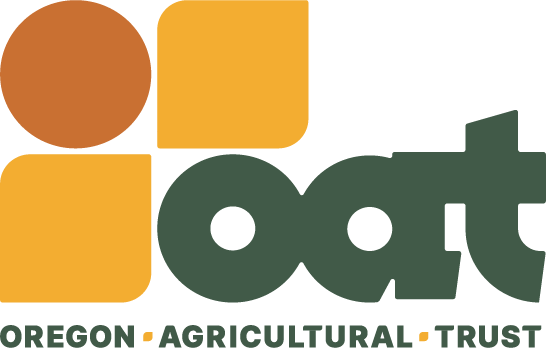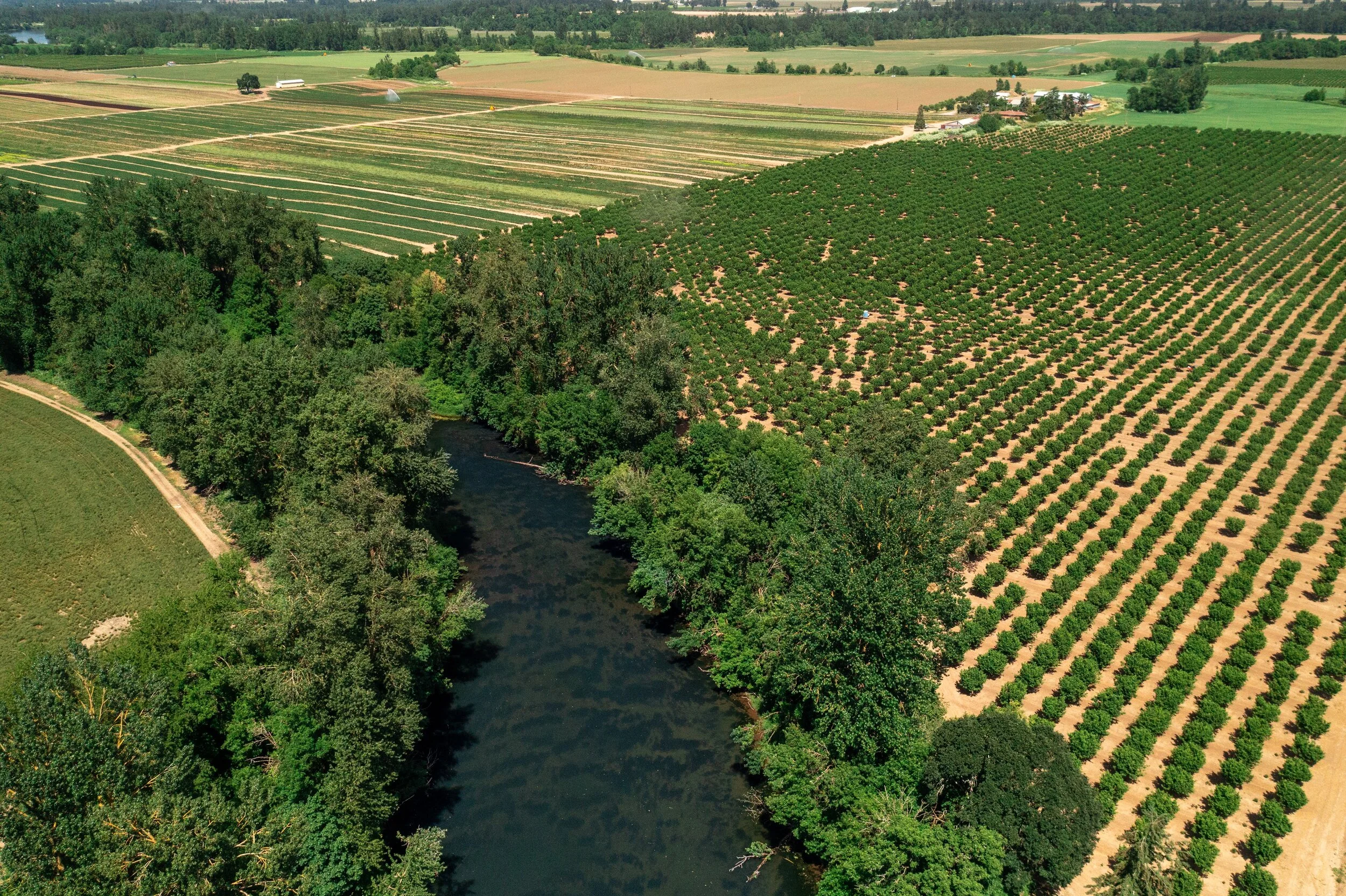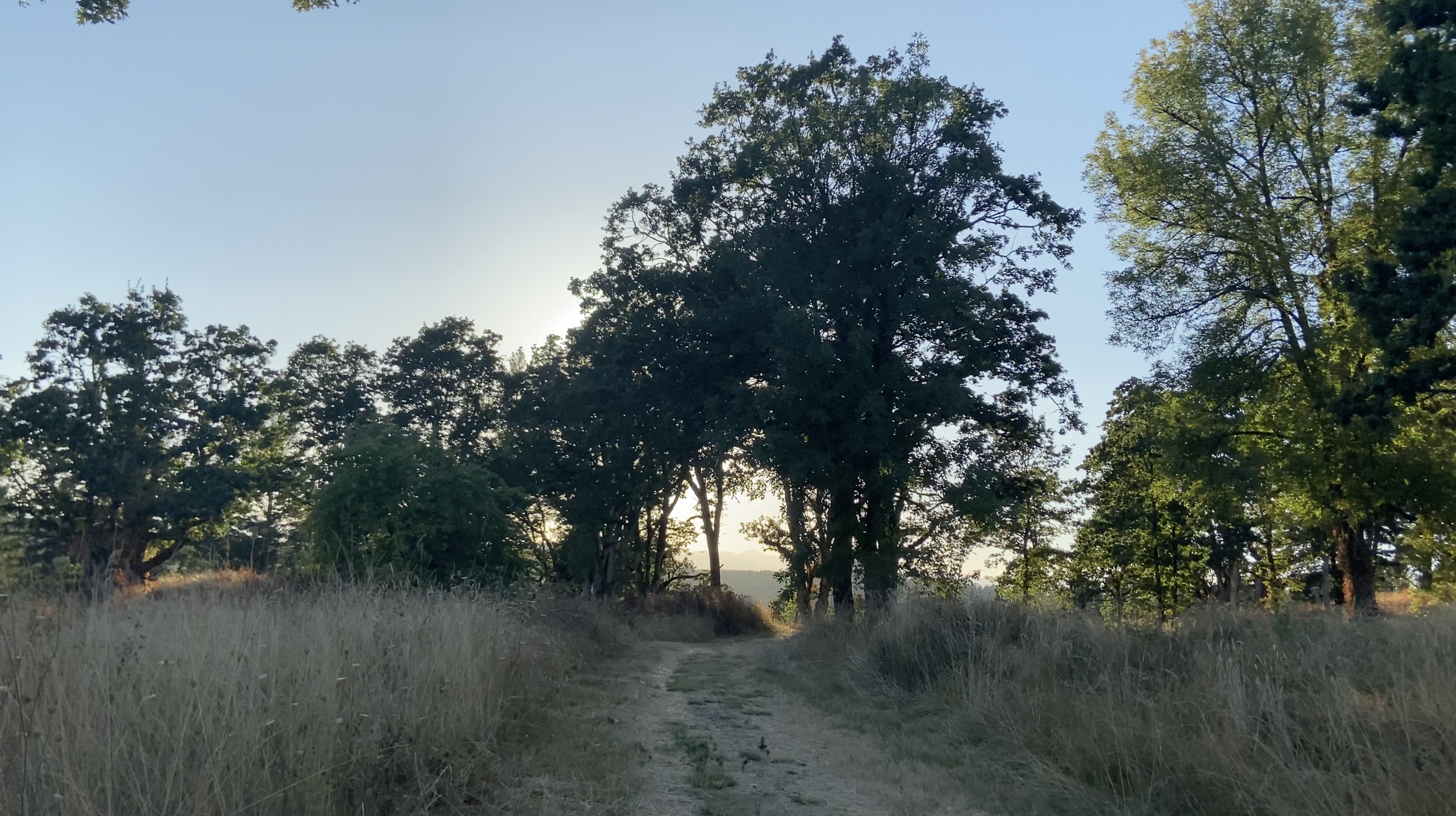Farmer and winemaker Mimi Casteel spoke to the OAT community in December about the Oak Accord, the coexistence of agriculture and conservation, and how OAT plays a role. This blog post is an excerpt of her wonderful talk. We encourage you to read the entire beautifully written speech here.
The word persist comes from the Latin sistere, to stand, and per, meaning through, steadfastly. It is a standing verb, not a moving one. To persist is “oak” as verb. The oak is a standing universe of connections, and is a touchstone of this land, its history and people. In founding the accord, we saw the oak as a catalyst for dissolving the perceived mutual exclusivity between agricultural productivity and the healthy habitat on which it depends. - Mimi Casteel
Acorns germinate soon after they fall and before the first frost, they send a taproot deep into even the most shallow, poor soil, and that is all they do before the winter comes. In their first year, oaks will produce only one set of true leaves, remaining a few mere inches above ground, though below ground they are anything but small. All the energy from those first few leaves is poured into building a foundation, ten times the biomass below ground, a silent statement of their commitment to time and place.
You’ve no doubt observed the marcescent leaves of the oak, holding on considerably longer than virtually all other deciduous trees. While not fully understood, this adaptation, along with the waxy cuticle that helps impart drought persistence, make oak leaves an invaluable currency for our food web. Lift a single layer off the oak leaf litter and you will barely scratch the surface of the collembola, bristletails, carabid beetles, rove beetles, nematodes, worms, sow bugs, pill bugs, mites, and more.
In living and dying these oak dependent animals are also pivotal to the turning of our nutrient cycle. Critical micronutrients are locked in deep soil columns, in trace amounts. The deep, deep roots of the oak access these minerals and when the leaves fall those minerals replenish our topsoil for growing nutrient dense crops. The blankets of leaves that cover the ground break down at three times the rate of alder, maple, or ash. Their waxy cuticle provides a brilliant structure to the ground cover, preventing erosion and evaporation, cooling the soil and holding water in times of drought.
This leaf litter may be the greatest unseen wealth of our working lands, for it feeds the armies of untold soil dwelling insects and microorganisms that feed our cash crops and keep our soils productive. The secondary plant compounds, the tannins and phenolics that are in each of the 700,000 leaves a mature oak drops every year are at once defensive against invading pests and medicine for a healthy food web. All organic matter is not created equal, you see. We need fast and slow food for the whole web to thrive and grow throughout the year, and oak litter can feed soil for up to three years, building deep banks of residue for fueling crops and nursing future oak seedlings.
What I have tried to convey with my illustrated fraction of our food web is that the oak is both a keystone to and a metaphor for agriculture. The lives and livelihoods of this state and country depend on the quality and abundance of our agriculture, but our farmers are becoming few and aged, and have been largely ignored since the call of the great war. The genus Quercus, the oaks, support more life forms and interactions than any other tree genus in North America, and yet we have taken no care to ensure that they are not lost to us, taking with them the last vestiges of our ecological stability and resilience. Our farmers and our oaks become ghosts before our minds can conceive what we’ve lost.
What the Oak Accord seeks to accomplish has great synergy with the work of Oregon Agricultural Trust. The dependence of healthy agriculture on healthy habitat is well documented. The support that farmers need to fortify their lands with habitat infrastructure, hedgerows, shelterbelts, wildlife corridors, and concerted efforts to replenish healthy soils is not going to come from the seemingly unlimited wilderness that came before. This will be a human investment, and likely the most important one of our time.
One of the most over-used quotations in agriculture, for agriculture, by agriculture, in defense of, etc. ‘You cannot go green if you’re in the red,’ or often put this way, ‘there can be no environmental sustainability without economic sustainability.’ While this statement captures the tenuous situation that many of our land stewards are in, it is a false choice. For the basis of black-line agricultural economics was based on a linear model that either burned or exported the infrastructure of abundance, and there can be no truly profitable agriculture when Nature is in the red.
Current estimates put oak habitat at 2-7% of its historic norm. As a winegrower I acknowledge that we occupy critical hot spots of this system, and we also represent threat #1. I’ve said it before but it bears repeating that the measure of sustainability does NOT BEGIN after the last tree has been felled; it is not merely the measure of our post-development inputs or the size of our solar installation. This land is not for making blank canvases on which to paint our own faces. The removal of the last vestiges of this most precious and unique habitat in the name of more agricultural productivity will not arrest climate change or accommodate generations of future farmers.
OAT’s mission is to work with farmers, ranchers, organizations like the Oak Accord, conservation leaders and communities to collectively vision the healthiest and most generous future for Oregon. Without judgment or angle, OAT seeks to feed what feeds us. This is the original covenant of a cultural ecosystem. We need that commitment now more than ever.
To read Mimi’s entire talk (highly recommended), go here.




